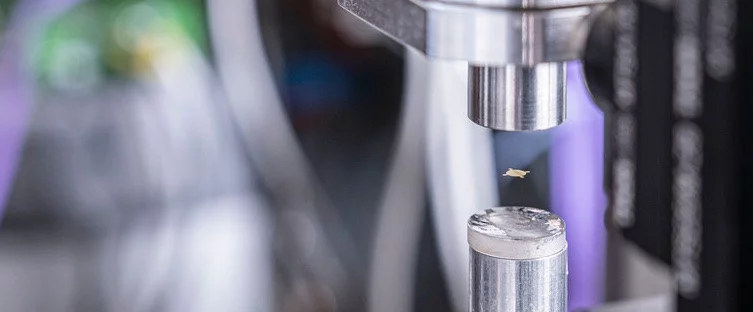Ultrasonic acoustic levitation diffractometer (ALD) is a novel tool for protein crystallography experiments combining the acoustic levitation, fast-frame-rate X-ray image detector, and high-brightness X-ray source. We aim at realizing a high-speed, high-sample-efficiency, high-throughput crystallography tool at room temperature.
See Ultrasonic acoustic levitation for fast frame rate X-ray protein crystallography at room temperature(link is external) and highlight.
The acoustic levitation is a versatile tool to manipulate samples in ambient air without relying on the specific sampel properties such as the optical transparency, the magnetic susceptibility, or the sample conductance. Nevertheless, it is a consequence of the acoustic nonlinearity of air: the produced static acoustic radiation pressure exerts force on the droplet and can levitate it against gravity.
Around the acoustically levitated droplet, the so-called acoustic streaming creates characteristic convective air flow, that can also induce the convection of the fluid inside of the droplet. While this effect can accelerate the mixing when a solution is dispensed via acoustic droplet ejection and coalescence, it can also cause the positional instability for droplet below a certain sizes.
When the acoustic droplet ejection is combined with the acoustic levitation, on-demand droplet loading is foreseen. For high-throughput automation, however, the optimization of the ejection geometry together with the development of an additional deceleration mechanism is crucial.
As another approach, we are proposing to use the acoustic levitation and rotation of polymer thin-film as sample holders, therein samples are dispensed at the centre of a rotating thin-film sample holder. X-ray diffraction experiments using such thin-films have been demonstrated recently including membrane protein samples.
See "Acoustic levitation and rotation of thin films and their application for room temperature protein crystallography," published in Scientific Reports and the Scientific Highlight of PSD and BIO/LNB with a video showing how easy to load these films onto an acoustic levitator.
References
[1] Soichiro Tsujino, Takashi Tomizaki, Ultrasonic acoustic levitation for fast frame rate X-ray protein crystallography at room temperature, Scientific Reports, 6, Article number: 25558 (2016); https://doi.org/10.1038/srep25558
[2] Soichiro Tsujino, Akira Shinoda and Takashi Tomizaki, On-demand droplet loading of ultrasonic acoustic levitator and its application for protein crystallography experiments, Applied Physics Letters, 2019, Volume 114, Number 21, Page 213702; DOI: 10.1063/1.5095574
[3] Soichiro Tsujino, Yohei Sato, Yasushi Takeda and Takashi Tomizaki, Oscillation resonances and anisotropic damping of the motion of acoustically levitated droplets in single-axis acoustic levitators, Applied Physics Letters, 2019, Volume 115, Number 5, Page 053702; DOI: 10.1063/1.5112109
[4] Takashi Tomizaki, Akira Shinoda and Soichiro Tsujino, Single crystal time-lapse measurement using ultrasonic acoustic levitation 2019; DOI: 10.1063/1.5084703
[5] Soichiro Tsujino and Takashi Tomizaki, Applications of Acoustic Levitation in Chemical Analysis and Biochemistry, in Acoustic Levitation (Nature Springer, 2020); ISBN : 978-981-32-9064-8; DOI: 10.1007/978-981-32-9065-5_9
[6] Michal. W. Kepa, Takashi Tomizaki, Yohei Sato, Dmitry Ozerov, Hiroshi Sekiguchi, Nobuhiro Yasuda, Koki Aoyama, Petr Skopintsev, Jörg Standfuss, Robert Cheng, Michael Hennig & Soichiro Tsujino, Acoustic levitation and rotation of thin films and their application for room temperature protein crystallography, Scientific Reports volume 12, Article number: 5349 (2022); https://doi.org/10.1038/s41598-022-09167-z




